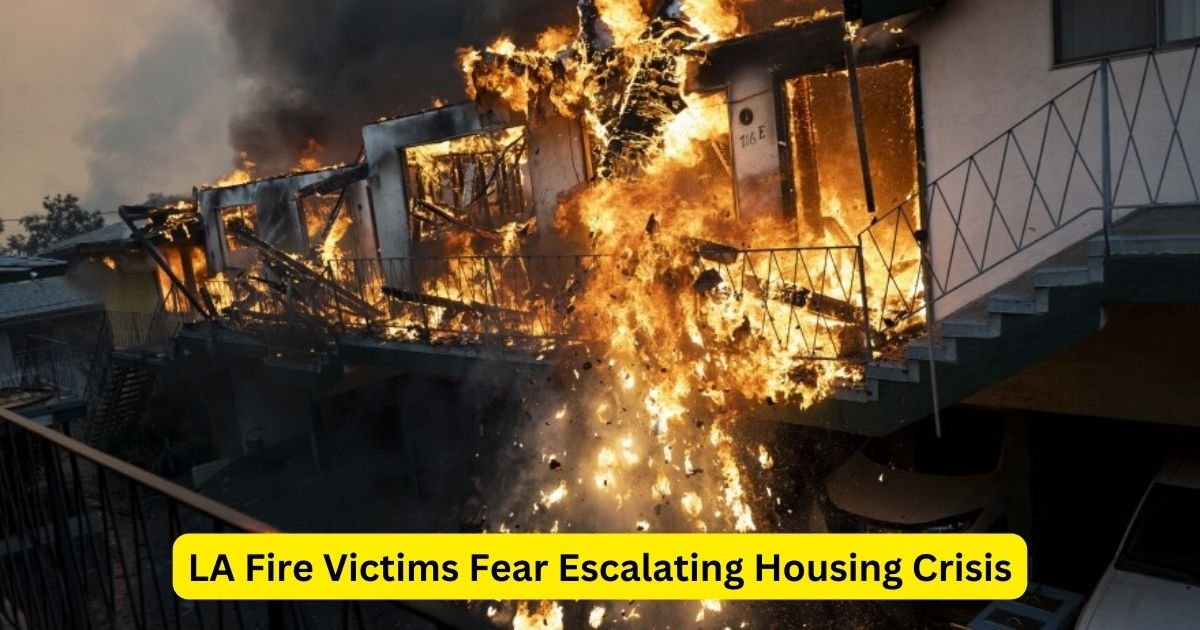Michael Storc and his family narrowly escaped the devastating Eaton Fire that ravaged their Altadena home. Now, as they sift through the ashes of their past life, they face a new challenge: navigating the costly and competitive Los Angeles housing market.
Storc, who is searching for a rental property, is finding that options are limited and prices have skyrocketed. “The places we’ve seen aren’t great, and the rent is much higher than I expected,” he told the Running Post. “I had to tell my daughter we might have to settle for something far less comfortable.”
With the recent Palisades and Eaton fires displacing thousands, the housing shortage in Los Angeles is growing more severe. The sudden surge in demand is stoking fears of rising rents and home prices in a city already known for its exorbitant real estate costs.
California’s anti-price gouging law limits rent increases to 10% after a state of emergency is declared. Additionally, Los Angeles County’s rent stabilization laws provide protections for existing tenants. However, some residents remain skeptical about how effectively these laws will be enforced.
“The law sounds good on paper, but who’s monitoring these increases?” questioned Jessica Heredia, a realtor in Brentwood. She pointed out that private agreements between landlords and desperate renters could still push prices beyond legal limits. “It’s hard to control when both parties are willing to bypass the rules.”
According to Zillow, the median rent for a two-bedroom apartment in Los Angeles is nearly $3,000. In Pasadena, near Altadena, the median rent stands at $2,600. For displaced families, finding affordable housing is proving to be a daunting task.
Jennifer Nazarian, a longtime Altadena resident, shared her frustrations. Her newly renovated home was reduced to rubble in the Eaton Fire. “We had just finished our remodel and celebrated Thanksgiving in our dream kitchen,” she said. Now, she and her husband are struggling to secure a temporary rental while waiting on insurance claims. “There’s not much available, and what’s there is expensive,” she noted.
Nazarian’s fears are shared by many displaced residents who worry about landlords exploiting the crisis. “Some landlords are going to see this as an opportunity to make more money,” she added.
Meanwhile, luxury real estate markets are also reacting to the crisis. In Santa Monica, for example, a high-end rental with an ocean view recently jumped from $29,995 to $35,000 per month. Heredia revealed that some people, overwhelmed by the rental market, are opting to purchase homes instead. However, there are no laws preventing home prices from soaring, leaving buyers vulnerable to sudden spikes.
Pete Brown, a spokesperson for Councilmember Traci Parks, highlighted a misconception about the victims of the Palisades fire. “People assume everyone in the Palisades is wealthy, but that’s not true. Many bought their homes decades ago at much lower prices. Their wealth was tied up in those properties, and now they’ve lost everything.”
Roya Lavasani is one such resident. Her family’s Malibu condo building, purchased in the 1980s, was destroyed in the fire. “We rented out other units in the building,” she explained through tears. “We’ve lost not only our home but also our primary source of income.”
After temporarily sleeping in their car, Lavasani’s family rented a motor home for a brief reprieve. “But we don’t know what comes next,” she said. “The market is so expensive, and we’re unsure how we’ll afford a new home.”
The challenges ahead for fire victims in Los Angeles are daunting. With housing in short supply and prices climbing, residents who have already lost everything are now bracing for a second crisis—a crisis of affordability and stability in a city that shows no signs of cooling down.
Read More News:
Firefighters Battle On as LA Braces for Dangerous Winds
Red Flag Warning Signals New Wildfire Threats in Southern California, Persists Until Wednesday
